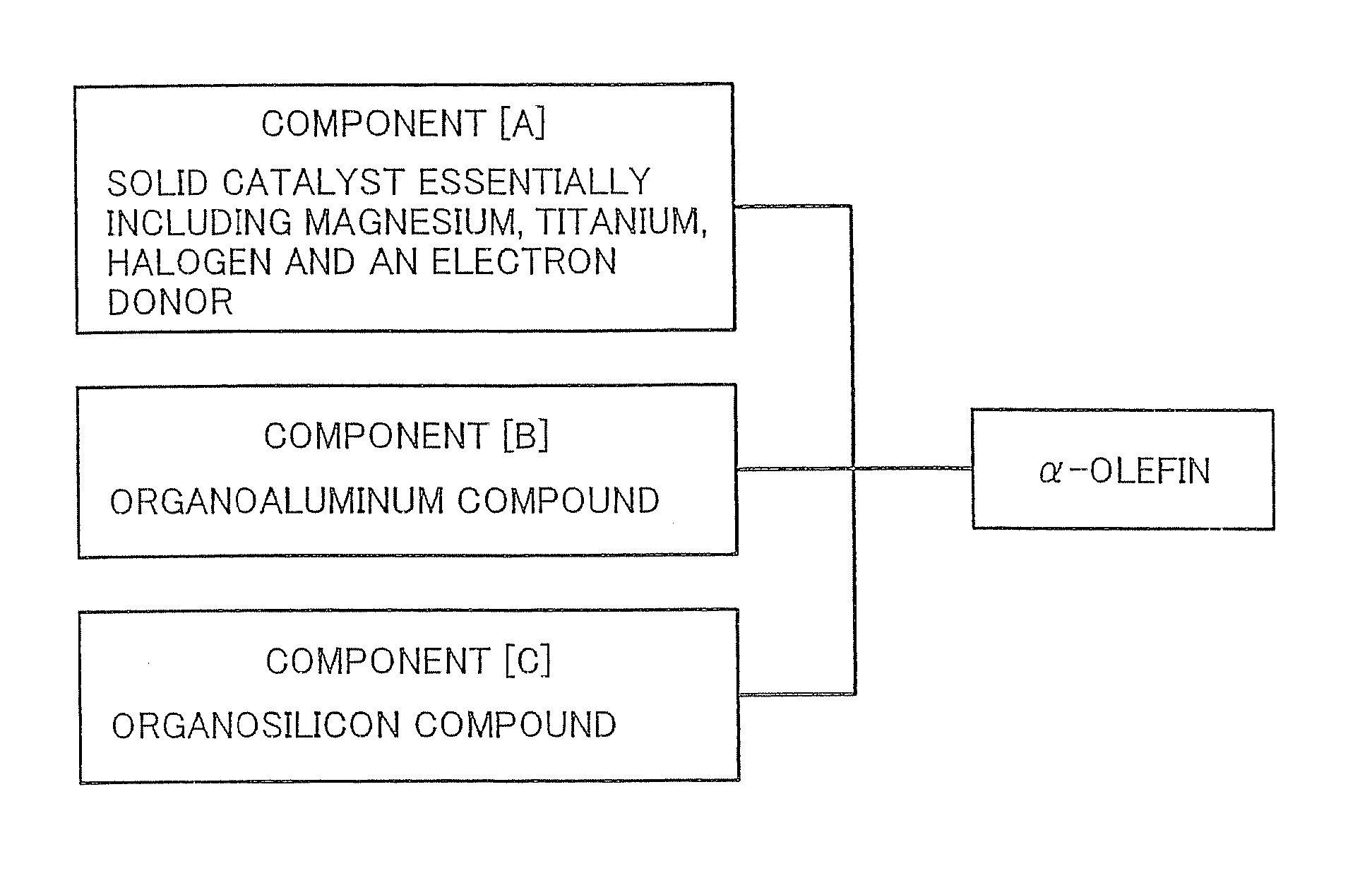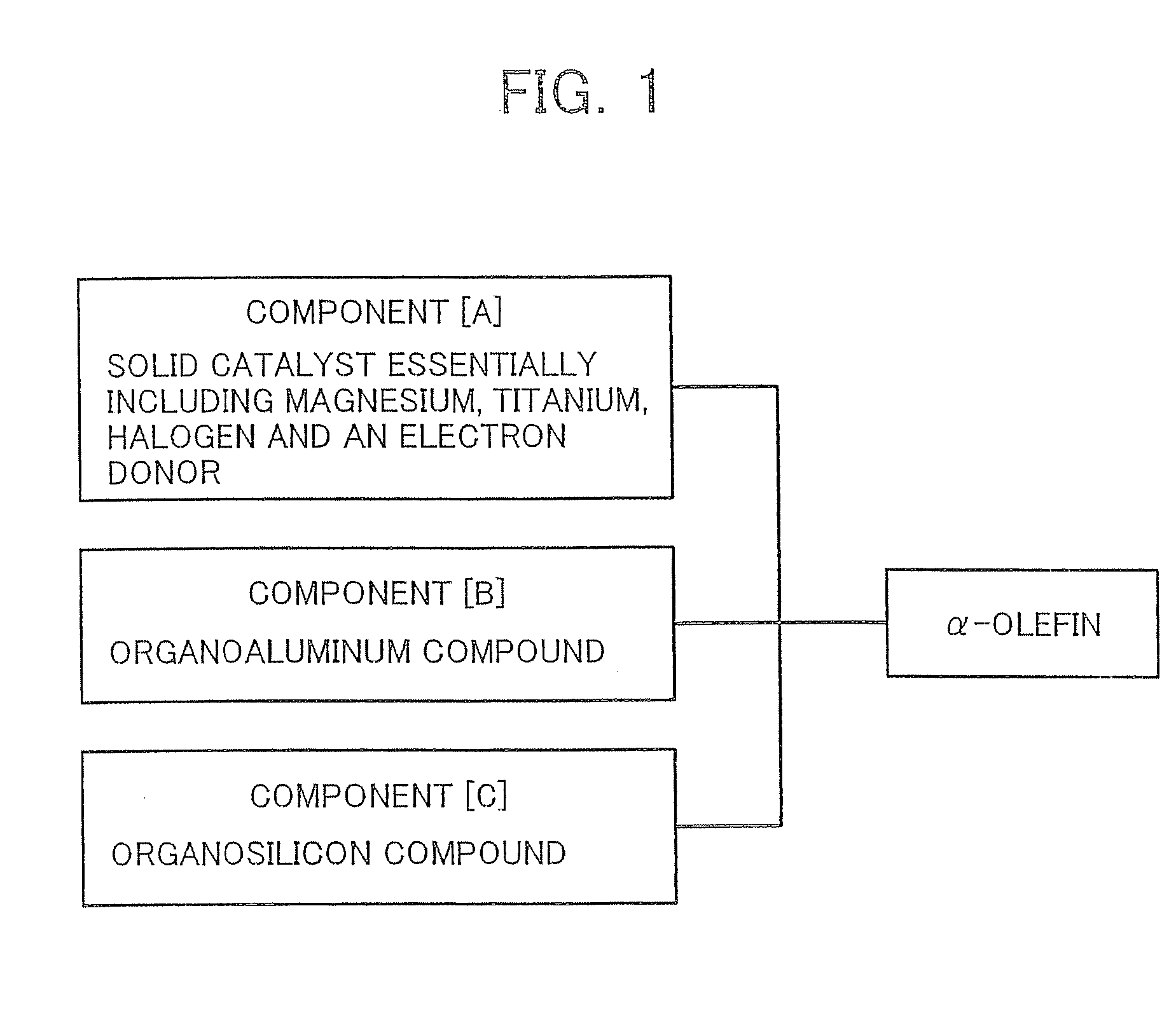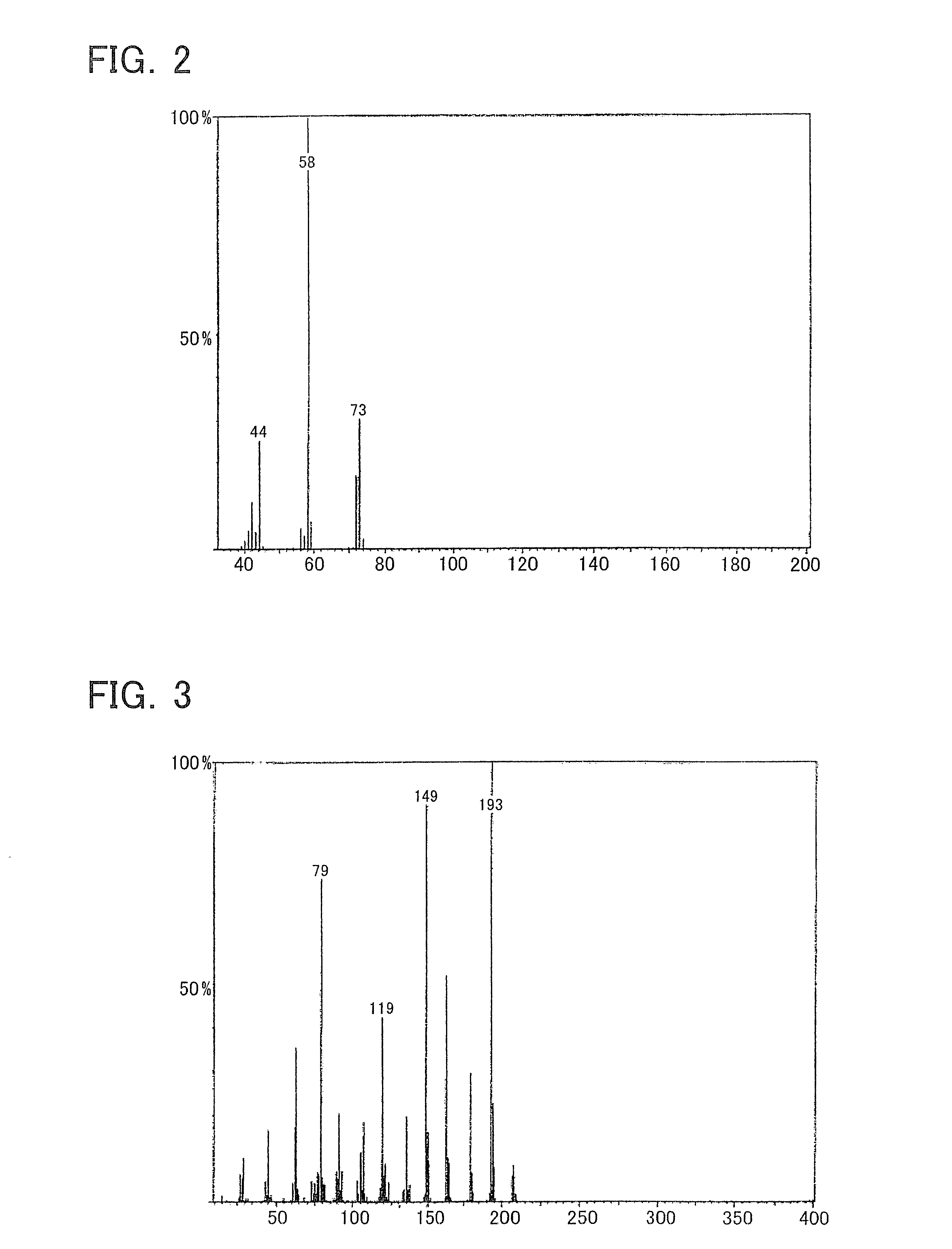Process for production of trialkoxyhalosilanes
a technology of trialkoxyhalosilane and process, which is applied in the field of process for production of trialkoxyhalosilane, can solve the problems of reduced yield, increased facility cost, and general difficulty in handing, and achieves the effects of high yield, low cost, and high yield
- Summary
- Abstract
- Description
- Claims
- Application Information
AI Technical Summary
Benefits of technology
Problems solved by technology
Method used
Image
Examples
example 1
[0122] Commercially available 0.145 mol of Si(OEt)4 and 0.020 mol of EtOH are supplied into a 100 ml flask with previously nitrogen-replaced internal ambient and agitated at room temperature, followed by dropping 0.050 mol of SiCl4 therein. When EtOH is employed in reaction, it reacts with SiCl4 to generate Si(OEt)4 and HCl in the system formally in accordance with 4EtOH+SiCl4→Si(OEt)4+4HCl. Based on the substance conversion by this expression, a substantial raw material composition is calculated to find that SiCl4:Si(OEt)4=1:3.33 and that the quantity of the catalyst is 10 mol %. After leaving through the night, the reacted mixture is analyzed in gas chromatography to find generation of ClSi(OEt)3 in an amount of 86% based on prepared Si. Additionally, 80 ml of diethylamine and 500 ml of dehydrated heptane are supplied into a 1000 ml flask with previously nitrogen-replaced internal ambient and, into the solution, the resultant reacted mixture is dropped and agitated for two hours a...
referential example 1
[0123] Commercially available 0.050 mol of ClSi(OEt)3 (96% gas chromatography purity) is reacted with 0.050 mol of diethylamine in the presence of 0.10 mol of triethylamine in 100 ml of heptane at room temperature through the night. As a result, gas chromatography confirms generation of a mixture containing the targeted triethoxy(diethylamino)silane 93% and a tetraethoxysilane 6%.
[0124] From the results of Example 1 and Referential Example 1, it can be determined that the amination reaction at the second step in the continuous reactions proceeds by about 93±3% in consideration of accuracy of the gas chromatography analysis. It is obvious that the yield at the first step in the continuous reactions is substantially a large factor that varies the yield as a whole. Therefore, in the following Examples 2-8, the first step in the continuous reactions, that is, production of trialkoxyhalosilanes, is described.
example 2
[0125] Commercially available 0.150 mol of Si(OEt)4 and 0.020 mol of EtOH are supplied into a 100 ml flask with previously nitrogen-replaced internal ambient and agitated at room temperature, dropping 0.050 mol of SiCl4 therein. A substantial raw material composition is SiCl4:Si(OEt)4=1:3.44 and the quantity of the catalyst is 10 mol %. After leaving through the night, the reacted mixture is analyzed in gas chromatography to find generation of 82% ClSi(OEt)3 and residue of 11 Si(OEt)4 based on prepared Si.
PUM
| Property | Measurement | Unit |
|---|---|---|
| temperatures | aaaaa | aaaaa |
| temperature | aaaaa | aaaaa |
| temperature | aaaaa | aaaaa |
Abstract
Description
Claims
Application Information
 Login to View More
Login to View More - R&D
- Intellectual Property
- Life Sciences
- Materials
- Tech Scout
- Unparalleled Data Quality
- Higher Quality Content
- 60% Fewer Hallucinations
Browse by: Latest US Patents, China's latest patents, Technical Efficacy Thesaurus, Application Domain, Technology Topic, Popular Technical Reports.
© 2025 PatSnap. All rights reserved.Legal|Privacy policy|Modern Slavery Act Transparency Statement|Sitemap|About US| Contact US: help@patsnap.com



